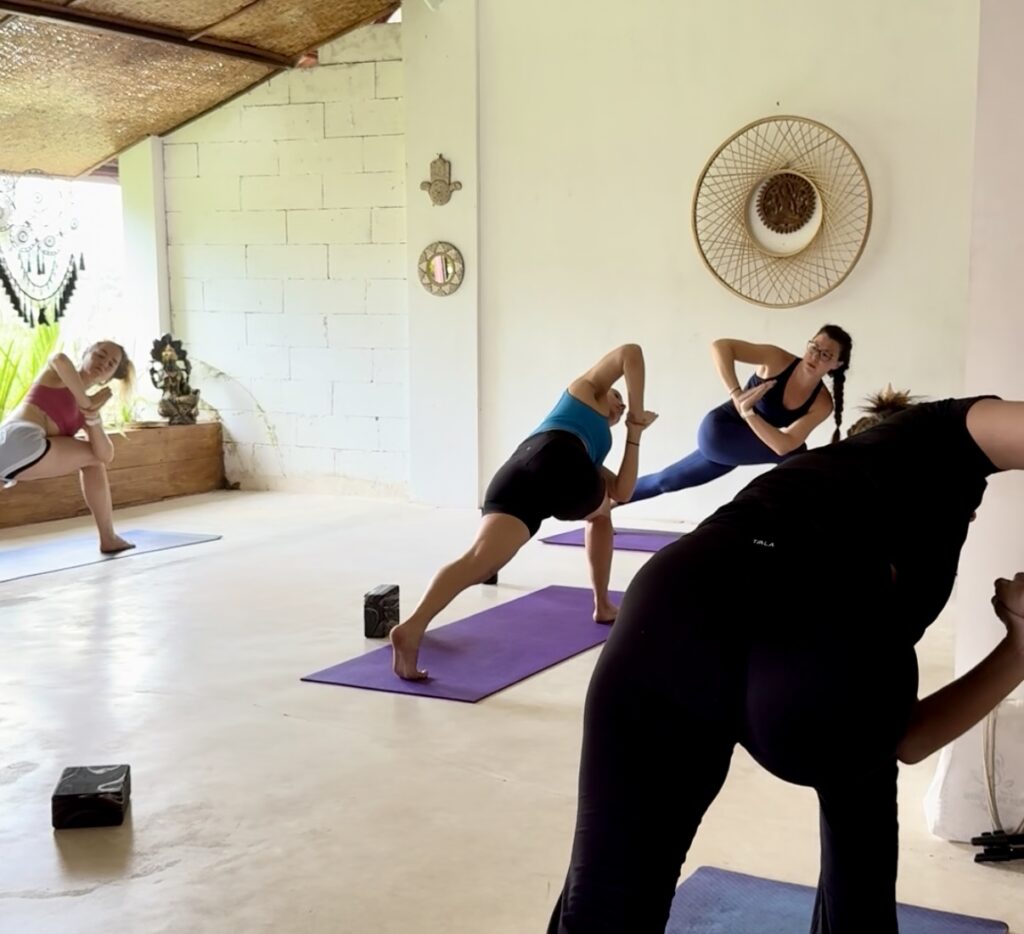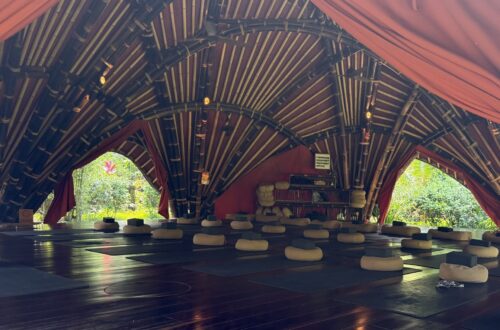Teachers Are Also Learning: Why Teaching Is the Most Important Profession Ever
As I sit in front of a class, prepared with a rhythmic sequence to teach yoga, I am learning just as much as my students are. I watch the room and observe and notice what kind of limitations students have. In shoulder mobility and immobility. I notice the level of awareness they have in the way their body moves. That’s how I decide on the speed that I teach, and the cues that I use.
No amount of research or practice can fully prepare me to effectively teach a class because I don’t know most of the people and what their capacities are. When I suggest a movement, my goal is to safely demonstrate and activate the muscles that support the joints. I may give the options to support or challenge a certain movement. Everyone will respond differently and while some of the students will be at their capacity, for others it will feel challenging, or too easy.
I never walk into a class with expectations. I think about how can I reach people and empower them. How can I hold space for them and meet them wherever they are. Always willing to adjust anything that’s not landing with my students. I detach from my views on how poses are supposed to look, rather focus on the mechanics of the fundamental muscle groups that we’re activating.
And I want to make sure that the words I use are simple so that my students can understand and adapt accordingly. When it comes to language, we can all have a slightly different definition of a word based on how we use it in our life. Most of us are predisposed to think in terms of our memories, education, or previous experiences. So, learning how to say the same thing in several different ways is very helpful for students.
I finally came to the realization that in order to be there for my students and meet them wherever they are, I have to be there for myself first. This is why authenticity matters so much. When we teach what people expect us to, versus teaching in a way that resonates with me, my practice, and my experience, we create misalignment from our authentic self, and the students can feel it.

Let’s get one thing straight: teaching isn’t just about standing in front of a room (or, in my case, a yoga class) and dishing out instructions. Nope. It’s about learning, adapting, and sometimes, winging it when your perfectly planned sequence hits a wall because, surprise, life, and your students, have other ideas.
As I settle into an easy seat at the front of my yoga class, I’m not just thinking about the next pose. I’m watching. Not in a creepy way, but with curiosity. I’m noticing how Linda’s shoulders hunch a bit more than usual, or how Tom’s downward dog could double as an impression of a collapsing tent. These observations aren’t criticisms; they’re clues. Every twist, stretch, and sigh teaches me how to teach them better. And believe me, no amount of YouTube tutorials or meticulously crafted lesson plans can prepare you for what happens when real, live humans roll out their mats.
Teaching: The Ultimate Improv Gig
Teaching yoga, or anything, really is like hosting a dinner party for people with wildly different tastes. You’ve got to offer options. Some folks want spice (challenge), others need something mild (support), and a few just came for dessert (savasana). The trick is reading the room and adjusting on the fly.
I never walk into a class assuming what people can’t do. That would be like starting a novel with, “This is probably going to be terrible, but here we go.” Instead, I focus on what they can do and how I can meet them there. If a pose isn’t landing, I pivot faster than a cat chasing a laser pointer. Teaching isn’t about perfect poses, it’s about progress, one micro-movement at a time.
Words Matter (But They’re Tricky Little Devils)
Let’s talk language. If you’ve ever tried to explain something simple and ended up sounding like you’re reciting Shakespeare in a math class, you’ll get this. Words are slippery. Each student filters them through their own experiences, so “engage your core” might mean “brace for impact” to one person and “clench like you’re holding a plank contest” to another.
That’s why I keep it simple, like a yoga version of “keep it real.” I’ll say the same thing in five different ways if that’s what it takes. And yes, sometimes I throw in a joke. If they laugh while in a challenging pose, they’re distracted from the burn. (Sneaky, right?)
Authenticity: Your Secret Sauce
Here’s the thing: if I try to teach like someone I’m not, the class will know faster than a toddler can spot an off-brand cookie. Authenticity matters. Students can sense when you’re phoning it in or trying to impress rather than connect. So, I teach from my experience, my practice, and yes, my failures. Because let’s face it – nobody wants to learn from a perfect robot who’s never fallen out of a pose or, you know, had a rough day.
Authenticity isn’t just a nice-to-have, it’s the bridge between teacher and student. It’s what makes your message land and stick. And honestly, teaching without authenticity is like trying to make soup without salt. Technically, it’s still soup, but nobody’s coming back for seconds.
The True Teacher: A Poetic Tribute
This brings me to a social media gem I stumbled upon, courtesy of @yogiwhale:
The greatest teacher is not the one who can bend into every pose.
The wisest teacher isn’t the one who reads from every book.
The true teacher is the one who’s walked through fire,
pieced their soul back together,
and still offers you their hand to climb the mountain together.
Let’s be real. The best teachers aren’t the ones who’ve aced every test or hit every mark. They’re the ones who’ve faceplanted into life’s challenges, dusted themselves off, and said, “Alright, let’s do this again.” They don’t just teach you how to solve problems but how to face them with courage.
Beyond the Yoga Mat: Why All Teachers Matter
Whether you’re guiding a yoga class, teaching algebra, or showing someone how to grill the perfect burger, the essence of teaching is the same. You’re holding space for others to grow, stumble, and rise. You’re shaping minds, inspiring confidence, and sometimes, just offering a safe space to breathe.
Think about the teachers who’ve shaped your life. Maybe it was your high school English teacher who turned your loathing of Romeo and Juliet into a love for storytelling. Or a coach who taught you resilience by pushing you to run just one more lap. Teaching is everywhere, and its ripple effect – Limitless.
Your Turn: Who’s Inspired You?
Here’s a little homework (don’t worry, it’s the fun kind): Who’s been the true teacher in your life? The one who saw your potential, believed in you when you didn’t, or simply made learning fun? Share your stories in the comments or with someone you appreciate. Because teaching, at its heart, is about connection, and we’re all better for it.
Teaching isn’t just a profession – it’s a lifeline for growth, resilience, and hope. So, to all the teachers out there – yoga, academia, or otherwise: Thank You! You’re shaping the world, one curious, courageous student at a time.





